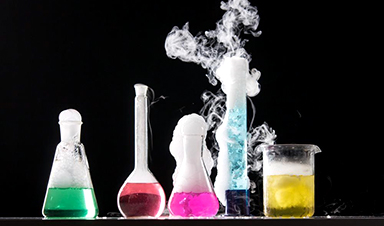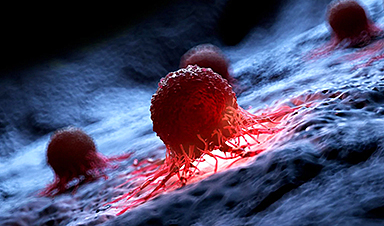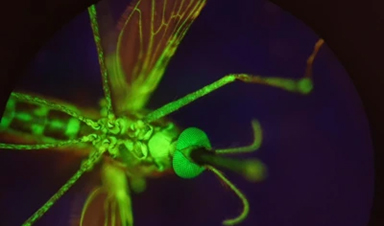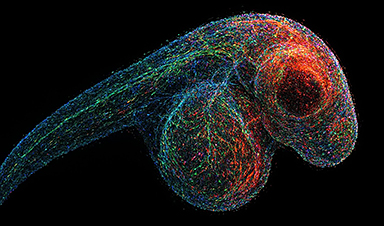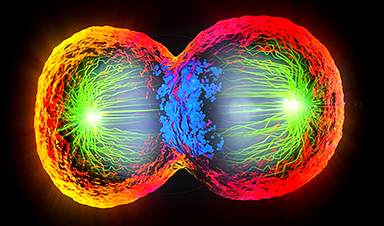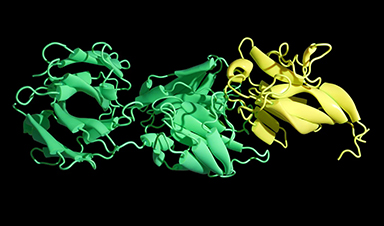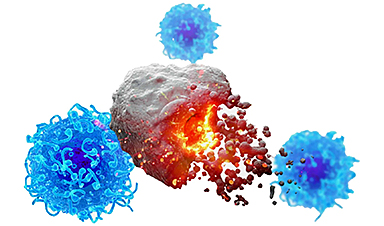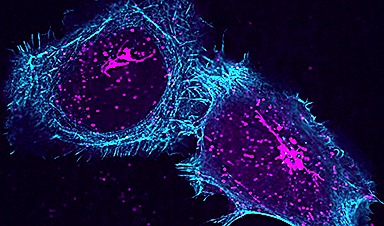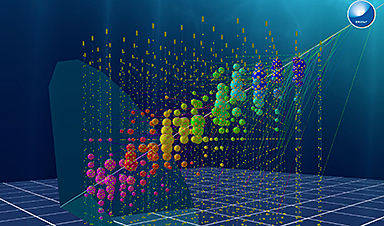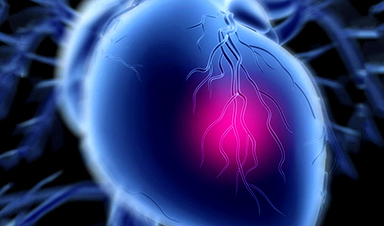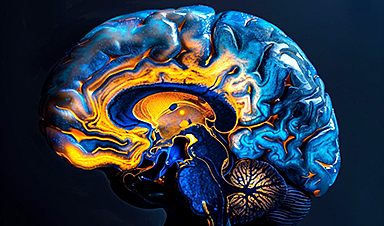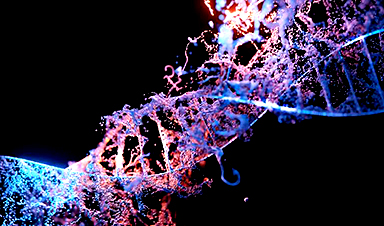A team of researchers from the University of Cambridge has developed a chemical ‘camera’ using a molecular glue that allows chemical reactions to be observed in real-time. The device is made up of semiconductor nanocrystals, referred to as quantum dots, and gold nanoparticles held together with a molecular glue called cucurbituril, with potential applications for a wide range of sectors due to its ease of use.
The research was published in the journal Nature Nanotechnology, and shows that once added to water, these components self-assemble to produce a tool that allows monitoring of chemical reactions as they happen. As well as being a powerful device, it is stable and assembles in seconds.
Using the light within the semiconductor nanocrystals, the camera causes an electron transfer process to take place, enabling the researchers to use spectroscopy to observe chemical species directly. Previously, this ability had only been theorized.
What is the Nano Camera?
The nano camera is produced by combining semiconductor nanocrystals, gold nanoparticles, and cucurbituril to produce a stable, hybrid material that interacts with light and allows for real-time monitoring of chemical reactions. Professor Oren Scherman and his team at Cambridge’s Cavendish Laboratory and University College London developed this new method.
The semiconductor nanocrystals act as assembly modulators, controlling the assembly of the larger gold nanoparticles through a process which the team named ‘interfacial self-limiting aggregation’. Doing so enabled the production of a stable hybrid material that can interact with light, composing the nano camera.
In the laboratory, the team combined the individual components of their camera along with the molecule they wished to observe in water at room temperature. Past attempts to mix gold nanoparticles with cucurbituril led to items undergoing unlimited aggregation. However, the addition of semiconductor nanocrystals to the mixture produced a stable semiconductor-metal hybrid.
Key Findings
The researchers used spectroscopy to observe the chemical reactions once the components were mixed together. With the camera’s presence, they observed the formation of a radical species and products of the assembly, including a sigma violgen dimeric species, the product of two radicals forming a reversible carbon-carbon bond.
All the components used are readily available, and the camera can be formed without the need for extreme conditions.
We were surprised how powerful this new tool is, considering how straightforward it is to assemble.
Dr. Kamil Sokolowksi, first author
Individually, each component’s properties and uses are well known, but their unique combination makes this research an innovation.
For example, cucurbituril is a macrocyclic molecule made up of glycoluril monomers linked by a methylene bridge. It has a high affinity, highly selective, and its binding properties have led to use as a molecular ‘glue’ in the aggregation of nanoparticles in the past.
Both the aggregation of semiconductor nanocrystals and old nanoparticles are well documented; however, their use with cucurbituril to produce a nano camera is a novelty that could be pivotal in understanding other significant reactions in nanotechnology.
The Future of the Nano Camera in Nanotechnology Research
The nano camera has vast potential to be used in research and industry. It is inexpensive and straightforward to produce, meaning that it can replace more expensive, complicated methods which were not accessible in the past.
The type of complex hybrid produced can be formed in nature thanks to a self-limiting process, but this is not easy to replicate under lab conditions and is often a costly and lengthy process.
This innovative, simple process can be applied to many different combinations of metal nanoparticles and semiconductor nanocrystals that could not form hybrids in a laboratory previously, therefore providing new opportunities for imaging chemical reactions.
In a press release from the University of Cambridge, Dr. Sokolowski explained “This platform is a really big toolbox considering the number of metal and semiconductor building blocks that can be now coupled together using this chemistry– it opens up lots of new possibilities for imaging chemical reactions and sensing through taking snapshots of monitored chemical systems.”
One of the industries that may benefit from the use of the nano camera is renewable energies. The Scherman lab in Cambridge team is already working on developing a hybrid that will allow the observation of electron-transfer processes in artificial photosynthetic systems and photocatalysis.
Understanding and harnessing an artificial photosynthetic system would greatly advance the renewable energy sector. Current solar panels using photovoltaic cells are not efficient and are unable to store energy. Artificial photosynthesis could produce clean, storable fuels, and the ability to observe a chemical reaction in real-time could allow it to be replicated on a large scale.
The research team is also exploring how the process can be used to observe the formation of carbon-carbon bonds. Experiments exploring electrode interfaces for battery applications are also being conducted.
It is clear the knowledge that could be gleaned from observing real-time reactions could improve existing nanotechnology and produce new innovations, making this device an appealing addition to the future of the sector.
News
The CDC buried a measles forecast that stressed the need for vaccinations
This story was originally published on ProPublica, a nonprofit newsroom that investigates abuses of power. Sign up to receive our biggest stories as soon as they’re published. ProPublica — Leaders at the Centers for Disease Control and Prevention [...]
Light-Driven Plasmonic Microrobots for Nanoparticle Manipulation
A recent study published in Nature Communications presents a new microrobotic platform designed to improve the precision and versatility of nanoparticle manipulation using light. Led by Jin Qin and colleagues, the research addresses limitations in traditional [...]
Cancer’s “Master Switch” Blocked for Good in Landmark Study
Researchers discovered peptides that permanently block a key cancer protein once thought untreatable, using a new screening method to test their effectiveness inside cells. For the first time, scientists have identified promising drug candidates [...]
AI self-cloning claims: A new frontier or a looming threat?
Chinese scientists claim that some AI models can replicate themselves and protect against shutdown. Has artificial intelligence crossed the so-called red line? Chinese researchers have published two reports on arXiv claiming that some artificial [...]
New Drug Turns Human Blood Into Mosquito-Killing Weapon
Nitisinone, a drug for rare diseases, kills mosquitoes when present in human blood and may become a new tool to fight malaria, offering longer-lasting, environmentally safer effects than ivermectin. Controlling mosquito populations is a [...]
DNA Microscopy Creates 3D Maps of Life From the Inside Out
What if you could take a picture of every gene inside a living organism—not with light, but with DNA itself? Scientists at the University of Chicago have pioneered a revolutionary imaging technique called volumetric DNA microscopy. It builds [...]
Scientists Just Captured the Stunning Process That Shapes Chromosomes
Scientists at EMBL have captured how human chromosomes fold into their signature rod shape during cell division, using a groundbreaking method called LoopTrace. By observing overlapping DNA loops forming in high resolution, they revealed that large [...]
Bird Flu Virus Is Mutating Fast – Scientists Say Our Vaccines May Not Be Enough
H5N1 influenza is evolving rapidly, weakening the effectiveness of existing antibodies and increasing its potential threat to humans. Scientists at UNC Charlotte and MIT used high-performance computational modeling to analyze thousands of viral protein-antibody interactions, revealing [...]
Revolutionary Cancer Vaccine Targets All Solid Tumors
The method triggers immune responses that inhibit melanoma, triple-negative breast cancer, lung carcinoma, and ovarian cancer. Cancer treatment vaccines have been in development since 2010, when the first was approved for prostate cancer, followed [...]
Scientists Uncover Hidden Protein Driving Autoimmune Attacks
Scientists have uncovered a critical piece of the puzzle in autoimmune diseases: a protein that helps release immune response molecules. By studying an ultra-rare condition, researchers identified ArfGAP2 as a key player in immune [...]
Mediterranean neutrino observatory sets new limits on quantum gravity
Quantum gravity is the missing link between general relativity and quantum mechanics, the yet-to-be-discovered key to a unified theory capable of explaining both the infinitely large and the infinitely small. The solution to this [...]
Challenging Previous Beliefs: Japanese Scientists Discover Hidden Protector of Heart
A Japanese research team found that the oxidized form of glutathione (GSSG) may protect heart tissue by modifying a key protein, potentially offering a novel therapeutic approach for ischemic heart failure. A new study [...]
Millions May Have Long COVID – So Why Can’t They Get Diagnosed?
Millions of people in England may be living with Long Covid without even realizing it. A large-scale analysis found that nearly 10% suspect they might have the condition but remain uncertain, often due to [...]
Researchers Reveal What Happens to Your Brain When You Don’t Get Enough Sleep
What if poor sleep was doing more than just making you tired? Researchers have discovered that disrupted sleep in older adults interferes with the brain’s ability to clean out waste, leading to memory problems [...]
How to prevent chronic inflammation from zombie-like cells that accumulate with age
In humans and other multicellular organisms, cells multiply. This defining feature allows embryos to grow into adulthood, and enables the healing of the many bumps, bruises and scrapes along the way. Certain factors can [...]
Breakthrough for long Covid patients who lost sense of smell
A breakthrough nasal surgery has restored the sense of smell for a dozen long Covid patients. Experts at University College London Hospitals NHS Foundation Trust successfully employed a technique typically used for correcting blocked nasal passages, [...]
